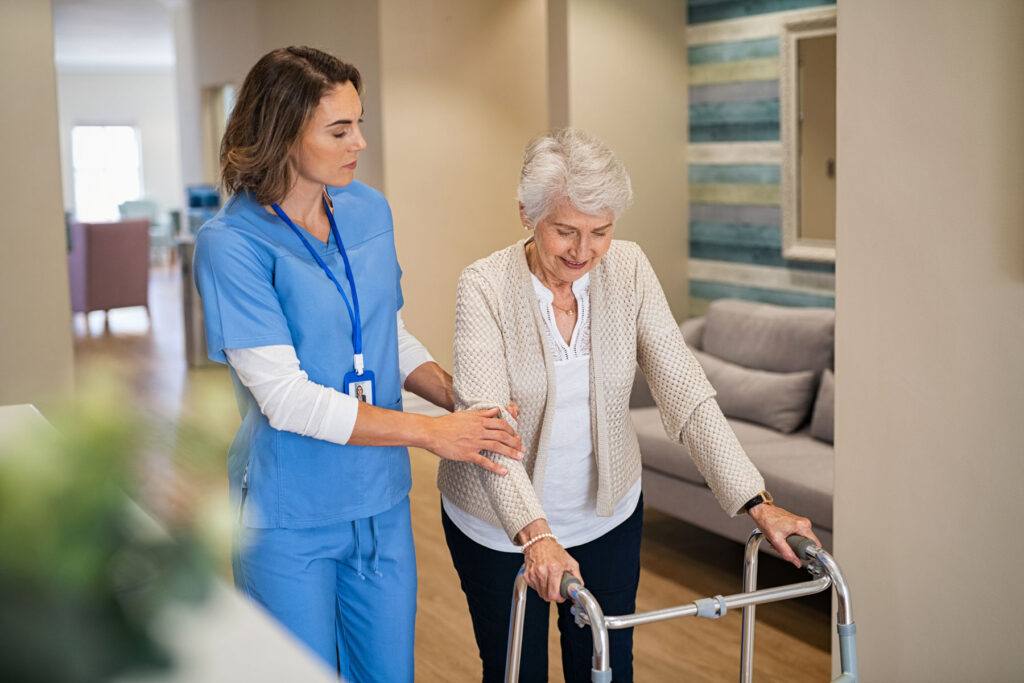As the global population ages, ensuring the safety and independence of our senior loved ones becomes a top priority. One of the most significant challenges faced by seniors is the risk of falls, which can lead to severe injuries and even hospitalization. Here, the role of fall detection in smart homes comes into focus, acting as a guardian angel for many elderly individuals. In this article, we will delve into how smart homes can be equipped with technologies that automatically detect falls, ensuring timely help and peace of mind for both seniors and their families.

What is Fall Detection Technology?
Fall detection technology involves the use of sensors and algorithms to identify when a person has fallen. These systems are designed to automatically alert caregivers or emergency services, reducing the response time in case of an accident. By integrating such technologies into a smart home, the risk of unattended falls can be significantly minimized.
How Does Fall Detection Work?
In a smart home environment, fall detection systems utilize various types of sensors such as accelerometers and gyroscopes. These sensors can be embedded in wearable devices or strategically placed around the home. When a fall is detected, the system sends an alert to pre-determined contacts or emergency services, ensuring immediate assistance.
Wearable Devices
Many seniors prefer wearable devices for fall detection as they are discreet and easy to use. These devices are equipped with advanced sensors that can differentiate between a fall and normal activities, reducing false alarms.
Environmental Sensors
Environmental sensors are installed in strategic locations throughout the home. These sensors work in tandem with the smart home system to monitor movements and detect falls.
Benefits of Fall Detection in Smart Homes
Implementing fall detection technology in smart homes offers numerous benefits. Firstly, it promotes independent living for seniors by providing an added layer of security. Secondly, it offers peace of mind to family members who may not be able to be physically present at all times. Lastly, it ensures that help is available at the earliest, potentially reducing the severity of injuries.
Promoting Independence
Seniors value their independence, and smart home fall detection systems allow them to live alone without constant supervision. This autonomy can significantly improve their quality of life.
Reducing Emergency Response Time
One of the critical benefits of automated fall detection is the reduction in response time. Immediate alerts enable quick intervention, which can be crucial in preventing further complications from a fall.
Challenges and Considerations
While the benefits are clear, there are challenges to consider when implementing fall detection systems in smart homes. These include the cost of installation, the potential for false alarms, and the need for regular maintenance and updates.
Cost of Installation
The initial investment for a comprehensive fall detection system can be significant. However, for many families, the investment is justified by the safety and peace of mind it provides.
Dealing with False Alarms
False alarms can be a nuisance and may lead to unnecessary emergency responses. Modern systems are continuously improving to reduce false positives, but it remains an area of concern.
The Future of Fall Detection in Smart Homes
The future of fall detection technology looks promising, with advancements in AI and machine learning leading to more accurate and reliable systems. These technologies will continue to evolve, offering better integration with other smart home devices and more user-friendly interfaces.
Integration with Other Smart Home Devices
Future systems may seamlessly integrate with other smart home devices, creating a comprehensive ecosystem that enhances safety and convenience for seniors.
AI and Machine Learning
AI and machine learning are set to revolutionize fall detection, making systems smarter and more intuitive. These advancements will allow for better prediction and prevention of falls, rather than just detection.
Conclusion
In conclusion, fall detection in smart homes represents a significant step forward in ensuring the safety and independence of seniors. With continuous advancements in technology, these systems will become even more sophisticated, providing greater security and peace of mind for families. As we move forward, it’s essential to embrace these innovations and incorporate them into our homes to protect our loved ones.

FAQs
What is fall detection in smart homes?
Fall detection in smart homes refers to the use of technology and sensors to automatically identify and alert caregivers or emergency services when a fall occurs, ensuring timely assistance for seniors.
How reliable are fall detection systems?
Modern fall detection systems are highly reliable, with advanced sensors and algorithms that minimize false alarms. However, no system is perfect, and regular updates and maintenance are essential to ensure accuracy.
Can fall detection systems be integrated with other smart home devices?
Yes, many fall detection systems can be integrated with other smart home devices, creating a comprehensive safety network that enhances the security and convenience of seniors living independently.
For more information on preventing falls among seniors, visit the American Academy of Orthopaedic Surgeons.
Learn more about fall detection and independent living and discover the best strategies for senior safety.
For a comparison between different types of fall detection devices, read about smartphones vs dedicated fall detection devices.
This article contains affiliate links. We may earn a commission at no extra cost to you.

